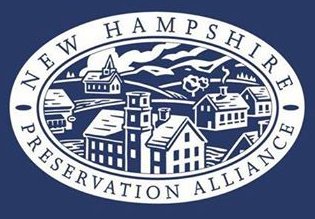Preservation as the New Sustainability
While the marketplace often urges us to consider new as better, data from the U.S. Energy Information Administration shows that the only buildings more energy efficient than those built before 1920 are buildings built after 2000. The majority of these pre-1920 buildings were constructed using repairable and often local materials and were sited and designed to minimize heating and cooling requirements. That doesn’t mean that historic buildings are always as energy efficient as they might be; but old buildings can, and should, go “green.”
Original materials and existing buildings contain embodied energy, an environmental asset destroyed by modern replacement.
Historic preservation practice also encourages us to look beyond operating energy to the total energy associated with a building’s development. Energy is used to extract and create building materials, transport them, and assemble them into a building. National Trust’s study The Greenest Building: Quantifying the Environmental Value of Building Reuse found that “it takes 10 to 80 years for a new building that is 30 percent more efficient than an average-performing existing building to overcome, through efficient operations, the negative climate change impacts related to the construction process.” Original materials, and existing buildings, contain embodied energy, an environmental asset destroyed by modern replacement. Here are some ideas for everyday sustainable practices:
For your home or other historic property:
Use advisors experienced with old buildings and comprehensive evaluations of costs when exploring renovation or re-use of old structures.
Audit your building for energy use. Keep records of your energy consumption and compare them from year-to-year to monitor trends and identify waste. Buy more efficient replacement appliances, lights and monitoring systems to take advantage of developing technology.
Try to repair, rather than replace, historic windows. Even though windows often account for a relatively low percentage of a building’s energy loss, they are often targeted as major energy sinks. Compare the value of a new window that has to be replaced in 10 years to one that’s been in place for 50 or 100 years. Historic wooden windows are simple to repair, and when properly maintained or restored will generally outlast replacements.
Buy locally-produced buildings materials. Transportation is costly in both energy use and in generating pollution, and this option helps your local or regional economy.
For your municipality and region:
Historic wooden windows are simple to repair and when properly maintained will outlast modern replacement windows.
Feature environmental and economic sustainability goals and practices in master plan updates and follow through to adopt sustainable practices for your public works investments and planning and community development practices. Schools are a great place to showcase this work! Encourage communication and collaboration between all appropriate municipal bodies to maximize their effectiveness. Groups may include your planning board, energy committee, economic development group or heritage or historic district commissions.
Use existing buildings, and locate municipal services in downtowns and village centers, wherever economically practical. Take advantage of programs that encourage sustainability such as N.H. RSA 79-E, a downtown tax incentive that promotes investing in existing buildings, strong local economies and sustainable growth.
If you have a local historic district commission, prepare its members and applicants with facts about window replacement and policies for dealing with solar panels, wind towers and other new technologies.
Make links between historic preservation and land conservation. Investing in downtowns and villages can help protect open areas, preserve farmland and prevent forest fragmentation. Open space helps absorb carbon dioxide, and forest and agriculture industries offer sustainable economic opportunities.
Preservation is a group effort. From updates to your own home, to working with local organizations in your town, to helping educate the public about the benefits, both fiscally and to the environment, of revitalizing and reusing historic buildings, we can preserve our history (and the earth) for future generations.


